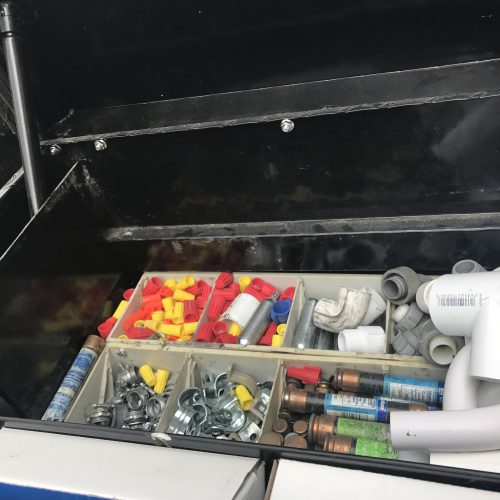Is Rapid Growth Masking Your Inventory Management Problems?
-
October 16, 2018
- Posted by: Scott Berlin

Two major signs to watch for and the available solutions
As the economy booms, success can mask a lot of margin-draining problems for contractors. Operations that once ran smoothly when the company was smaller can suddenly become inefficient. After all, as you grow, the number of trucks, people and job types you need to manage also grow. This means different quantities of different materials need to be stocked based on what each technician specializes in and what different customers prefer. It can get complicated.
As technicians run from one job to another, inventory management suffers because the consumption of material and parts is not being tracked, resulting in lost inventory, excessive purchases and shrinkage. Without complete visibility, service contractors may also start to lose touch with the actual material cost of performing a job.
Many contractors struggle to slow down in a market like this to fix their broken inventory system. When you’re a smaller shop, the impacts of poor inventory management are limited. But as you grow, the negative effects multiply and constrain your ability to meet demand.
Here are two major signs to watch for and some solutions for overcoming growth-related inventory management challenges.
Missing and Obsolete Inventory
One sure sign of a growth-related inventory management problem is when contractors begin writing off a large amount of unaccounted-for material in their financials. They may have personal cards or open accounts at supply houses where owners let their technicians go and buy whatever they need to without approval. Obsolete and missing inventory is often the result of a system of no checks and balances in the purchasing process.
As growth continues, these contractors may not really feel the pain until they have a chance to sit down and look at the books. They wake up and see that they don’t know what their technicians have been buying or what has been used on the job.
Disconnected from Cost
The other sure sign of growth-related inventory management problems is that businesses find they no longer have a good idea of what it costs them to perform and complete a service job. While service contractors often have a good grasp of the cost of labor and the amount of time a job takes, they may lose their handle on the cost of materials for each job.
This may sound like a minor metric, but as the industry becomes more competitive, owners must know if they are hitting their already tight margins, and material cost is a crucial factor in that equation.
You should be able to answer with confidence if you can run specials on services during certain times of the year and still hit your numbers. To make those decisions, you need to know what’s being purchased – and what’s actually being used.
The Role of Technology
Service contractors shouldn’t allow growth to put blinders on their inventory management. Properly managing inventory with a mobile inventory management solution helps contractors track inventory as it’s consumed to the technician, job and truck levels.
When your business is small and your inventory lives in a single location, it’s relatively easy to manage. But it becomes increasingly difficult to know what you have in each location as you grow, including warehouses, tool cribs, jobsite trailers, vehicles and storerooms.
An inventory management system that can centrally track usage in real-time and set different target stock levels for multiple locations is key. After all, a one-size-fits-all stocking plan won’t work for a growing contractor business serving multiple regions and markets.
Many contractors have integrated their inventory management solution with their suppliers, making replenishment automatic and giving technicians the peace of mind that they’ll have what they need when they need it. That minimizes last-minute runs to the supply house and maximizes the number of jobs they can complete in a day.
Beyond more efficient operations, contractors can also take advantage of technology to upsell customers, knowing they will have the inventory on-hand to support it. Cross-selling services is also easier when you can ensure each of your techs has the right loadout based on their training and market focus.
The bottom line of better inventory management: More money to invest back into the business, which further fuels your success. More dollars to the bottom line can be put into more inventory, more trucks and more technicians. And that’s good for the top line.